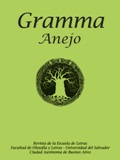BIBLIOGRAFÍA ARGENTINA DE LITERATURA COMPARADA (BIALICO): UNA INVESTIGACIÓN SOBRE LOS ORÍGENES Y EL DESARROLLO DEL COMPARATISMO ARGENTINO
Keywords:
History of Comparative Literature, Comparative Literature in Argentina, BIALICOAbstract
We aim to share some of the results of the Multi-Year Research Project titled "Argentine Bibliography of Comparative Literature (BIALICO)”, funded by the National Council for Scientific and Technical Research (CONICET), and conducted by the team of Comparative Literature Center (Faculty of Philosophy and Letters, National University of Cuyo). As the first attempt registered in Argentina, this project consists in the preparation of detailed and commented bibliographies of the comparative work achieved in the nineteenth and twentieth centuries in our country by writers, critics, theoreticians and historians of the literature. The purpose is the collection and analysis of critical material (essays, prologues, articles, notes, etc.) corresponding to the comparative work published in books and journals by the proposed authors, among which are Esteban Echeverría, Ricardo Rojas, María Teresa Maiorana, María Rosa Lojo, Nicolás Jorge Dornheim, Gloria Galli de Ortega and Arturo Farinelli. The objective of the project is to contribute to the history and legitimacy of comparative literature in Argentina through the preparation of a concrete corpus that will allow proposing and rethinking theoretical and methodological criteria to determine which critics and types of productions integrate the past of the discipline in our country.Downloads
Published
How to Cite
Issue
Section
License
Works published in this journal are licensed under a Creative Commons Attribution-NonCommercial-
Works published under this licence may be shared, copied and redistributed in any medium or format. Adaptation, remixing, transformation and creation are also authorised. Both sharing and adapting are permitted as long as credit is given to the work appropriately, providing a link to the licence and indicating whether changes have been made. Commercial use of the material is also not possible.








